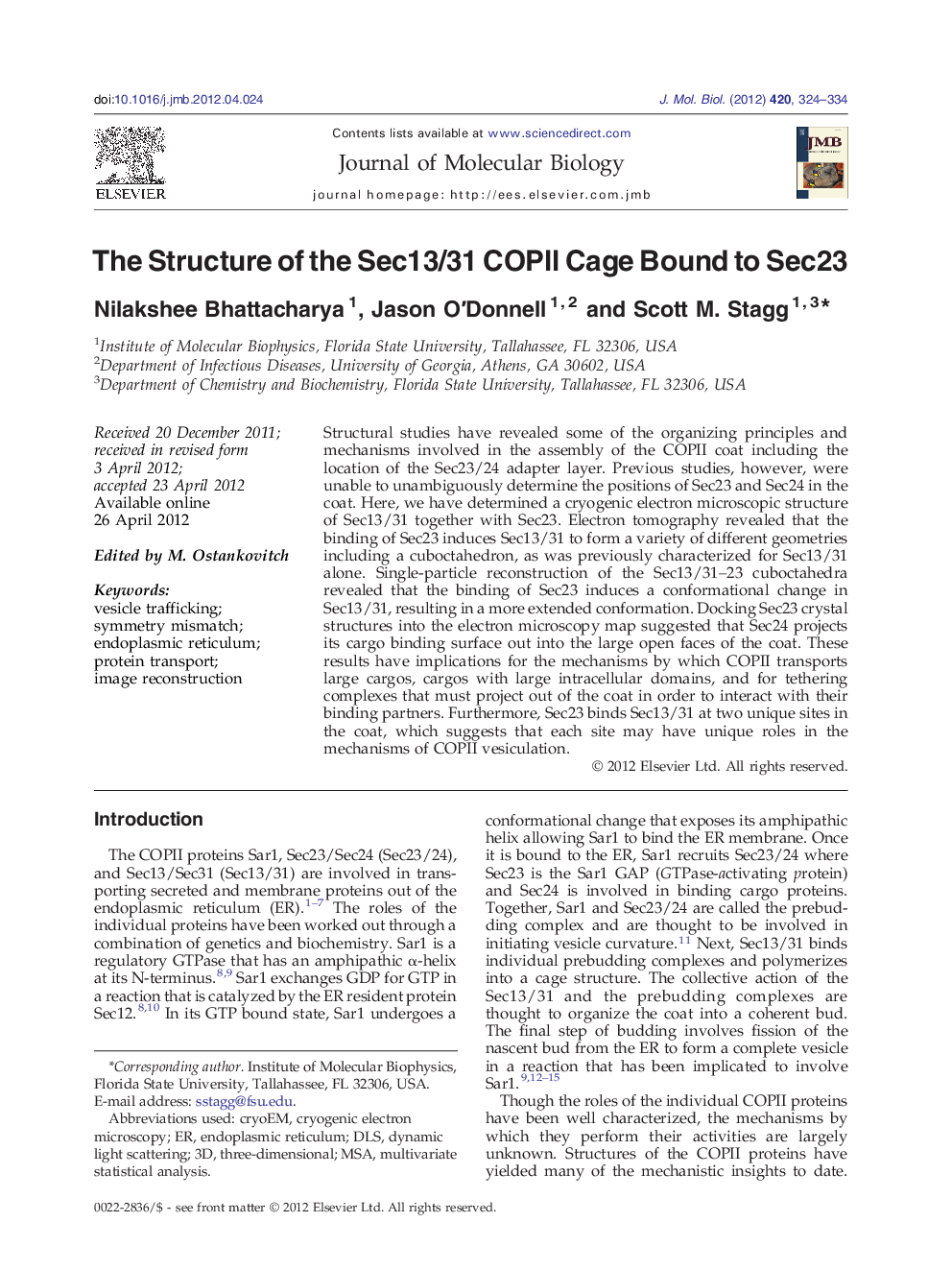| Article ID | Journal | Published Year | Pages | File Type |
|---|---|---|---|---|
| 2184740 | Journal of Molecular Biology | 2012 | 11 Pages |
Structural studies have revealed some of the organizing principles and mechanisms involved in the assembly of the COPII coat including the location of the Sec23/24 adapter layer. Previous studies, however, were unable to unambiguously determine the positions of Sec23 and Sec24 in the coat. Here, we have determined a cryogenic electron microscopic structure of Sec13/31 together with Sec23. Electron tomography revealed that the binding of Sec23 induces Sec13/31 to form a variety of different geometries including a cuboctahedron, as was previously characterized for Sec13/31 alone. Single-particle reconstruction of the Sec13/31–23 cuboctahedra revealed that the binding of Sec23 induces a conformational change in Sec13/31, resulting in a more extended conformation. Docking Sec23 crystal structures into the electron microscopy map suggested that Sec24 projects its cargo binding surface out into the large open faces of the coat. These results have implications for the mechanisms by which COPII transports large cargos, cargos with large intracellular domains, and for tethering complexes that must project out of the coat in order to interact with their binding partners. Furthermore, Sec23 binds Sec13/31 at two unique sites in the coat, which suggests that each site may have unique roles in the mechanisms of COPII vesiculation.
Graphical AbstractFigure optionsDownload full-size imageDownload high-quality image (126 K)Download as PowerPoint slideHighlights► The structure of the Sec13/31 cage together with Sec23 was determined. ► Binding Sec23 induces heterogeneity in the Sec13/31 cage. ► Sec23 binds Sec13/31 at two sites, one of which crosses the 2-fold symmetry axis. ► Docking Sec23/24 in the structure positions Sec24 toward the open faces of the cage.
